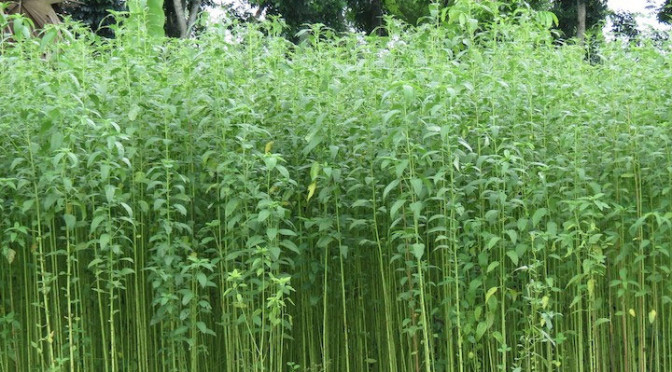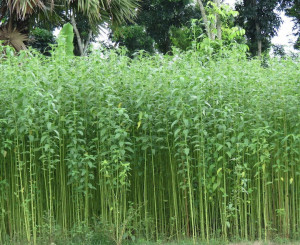Jute is hundred percent biodegradable natural fiber mainly produced in Asian region especially it is concentrated in north Indian and Bangladesh. Jute plants classified with the family Tiliaceae, and more recently with Malvaceae. Jute cultivation is highly concentrated in Ganges delta. This is because the plant prefers climates that are both warm and humid, with temperature ranging from 68° to 104°F (20° to 40°C) and a relative humidity of 70-80%. It also requires about 2 to 3 inches (5 to 8 cm) of rainfall per week. The new gray alluvial soil of good depth, receiving salt from annual floods, is best for jute.
The thread extracted from jute plant is soft, flexible, and hard wearing best fiber yet it is one of the cheapest natural fiber available in the market. Jute has a natural color in light tan to the brown range and we can add different types of color in it thus it is one of the designers friendly raw material.
The plan fiber extracted from jute used to make various items like rope, twine, chair coverings, bags, carpet etc. Jute stem also considers as an alternative to woods as jute plants contain a woody inner core.
Jute is harvested any time between 120 days to 150 days. The plant from 8 to 12 feet high is cut with sickles at or closes the ground level. Harvested stems are then tied together and soaked in water to soften before being stripped of their fiber. The extraction process (retting) of jute fiber is quite old and only skilled person can pull it off.. After stripped down jute fiber dried in the bundle as long as 20 days for easy transportation process.
Today we will discuss how jute plants and its products are taking a stand against pollution.
1: – Jute enriches the soil with nitrogen and organiccom2onent as large 2ortions of leaves and roots remain 3ith the soil. The jute increases the fertility of land during its defoliation process and jute plant itself needs very little fertilizer so toxic level of soil stay under control. Jute leaves are also used as a vegetable and have nutritional and medicinal value.
2: – Jute fibers and its products are hundred percent biodegradable and recyclable. Jute fiber product is environment-friendly as it can be disposed of without causing any environmental hazard, unlike plastic bags which takes more than 500 years to biodegrade. Repeated usage of jute packaging reduces expenses; making recycling cost effective.
3: – Jute plants maintain ozone layers. One sector jute plants can absorb up to 15 tons of CO2 and the same amount of plant can generate eleven tons of oxygen in within jut 150 days.
4: – The inner core with high yield cellulose is an ideal source to make paper it outperforms forest growth in every aspect.
5: – Jute is mainly cultivated during rainy season so water footprint is quite less compared to other material such as cotton which needs 2.5 percent of world’s water to grow.
6: – Jute produces biogas during retting process. This biogas (Methane) can be used for household purposes.
Jute is known as “golden fiber”. It is valuable for the economy as well as it is valuable for the environment too. From the above discussion, we can confidently make the decision to grow more jute so we can sustain our environment. Using jute product and investing in jute industries can be one of the major steps to build an eco-friendly, green environment for us and for our future generation.











